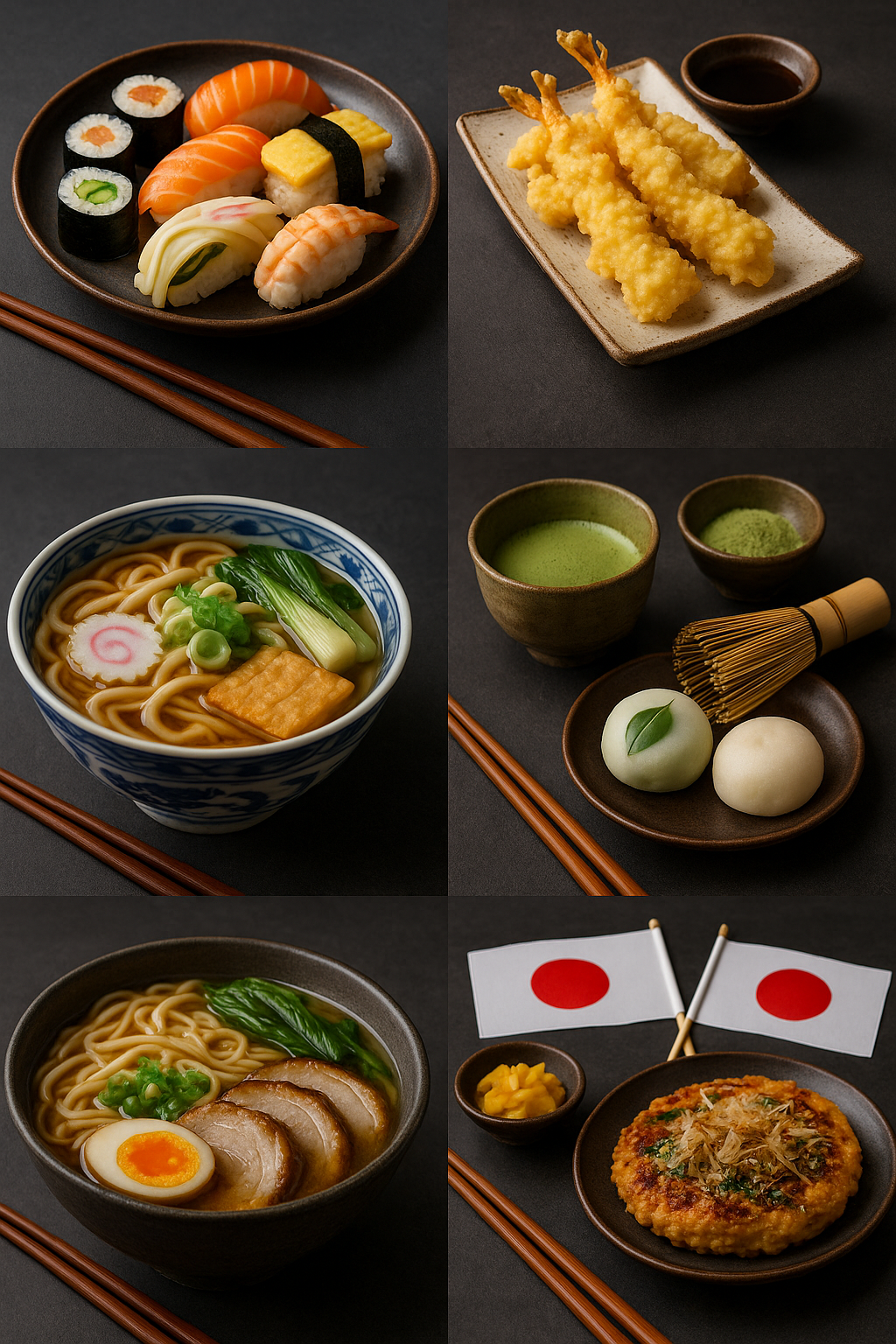PR
X
カレンダー
コメント新着
コメントに書き込みはありません。
キーワードサーチ
▼キーワード検索
テーマ: HAPPY NEWS(145)
カテゴリ: Food

Washoku: The Heart of Japanese Cuisine
In 2013, UNESCO recognized washoku—traditional Japanese dietary culture—as an intangible cultural heritage. Washoku emphasizes seasonal ingredients, balance in taste, and visual beauty. A typical washoku meal might include rice, miso soup, grilled fish, and pickled vegetables, all served with care for presentation and nutritional harmony. For Indian home cooks, the washoku philosophy can be adapted using seasonal vegetables, fresh fish, and local spices, while keeping the essence of balance and aesthetics intact.
Exploring Regional Flavors
Japan’s geography and climate have given rise to distinct regional cuisines. Hokkaido in the north is known for seafood-rich dishes like crab hot pot and butter-corn ramen. The Kansai region is famous for okonomiyaki (savory pancakes) and delicate Kyoto-style tofu dishes. Okinawa, influenced by tropical climates, offers stir-fries like goya champuru and nutrient-rich seaweed dishes. In India, many of these recipes can be recreated using locally sourced vegetables and meats, with substitutions for hard-to-find ingredients.
Sushi: Minimalism with Maximum Flavor
Sushi is a global ambassador of Japanese food. Its magic lies in the quality of each component—perfectly seasoned rice, the freshest fish, and crisp seaweed. In India, you can prepare sushi using fresh salmon or tuna from trusted fishmongers, paired with Japanese short-grain rice and rice vinegar. Vegetarian sushi options—like cucumber rolls, avocado maki, or tamago (egg) sushi—are also popular and easier to source. For those interested in going beyond recipes to understand Japanese culinary terms and etiquette, language learning can be a great companion. Courses such as Learn Japanese Online provide insight into the cultural and linguistic context of Japanese dining.
Ramen and Udon: Comfort in a Bowl
Ramen’s variety makes it endlessly appealing. Broths can be rich and creamy, like tonkotsu, or light and salty, like shio. Toppings range from marinated eggs to bamboo shoots and slices of pork. Udon, with its thick, chewy noodles, offers comfort whether served hot in winter or cold in summer. Both can be recreated in Indian kitchens using packaged noodles, soy sauce, and miso paste—often available in gourmet stores.
Tempura and Yakitori: Japanese Street Food at Home
Tempura—light, crispy battered vegetables or seafood—is easy to make at home. The key is using ice-cold batter and frying in small batches. Vegetables like sweet potato, pumpkin, or bell pepper work beautifully for Indian adaptations. Yakitori, or grilled skewered chicken, is marinated in a sweet-salty tare sauce. On Indian grills or tandoors, yakitori can be prepared using chicken or paneer for a vegetarian twist. To truly appreciate these dishes, one can explore more about Japanese food culture through platforms like the Indian Institute of Foreign Languages, which not only teaches the language but also covers cultural nuances.
Wagashi and Matcha: The Art of Japanese Sweets
Unlike many Indian desserts, Japanese sweets (wagashi) are often mildly sweet and visually artistic. Mochi—soft rice cakes filled with sweet bean paste—and dorayaki—pancakes filled with red bean—are traditional favorites. Matcha-based treats, from ice cream to sponge cakes, offer a unique blend of sweetness and earthy bitterness. Matcha powder is now available online in India, making it easier to try these delicacies at home.
Fusion: When Japan Meets India
Combining Japanese techniques with Indian flavors creates exciting new dishes. Miso curry vegetables using local produce like okra or cauliflower bring together the richness of both cuisines. Sushi rolls filled with spiced paneer or tandoori chicken offer familiar flavors wrapped in Japanese elegance. Ramen topped with Indian spiced boiled eggs or coriander chutney shows how easily the two culinary traditions can complement each other.
Ingredient Sourcing in India
Japanese Online Classes can help bridge that gap.
The Cultural Connection
Food is one of the most natural ways to connect with another culture. In India, trying Japanese recipes is more than just cooking—it’s an immersion into values of seasonality, presentation, and mindful eating. When Indians prepare Japanese dishes at home, they are not just replicating flavors; they are also participating in a cross-cultural exchange that strengthens understanding between the two countries.
Final Thoughts
Japanese cuisine offers a harmonious blend of flavors, health-conscious cooking, and visual artistry. Whether you’re enjoying a simple miso soup or hosting a sushi-making evening with friends, each dish tells a story of tradition, precision, and cultural pride. As Japanese food becomes more accessible in India, so does the opportunity to learn, experiment, and share. By understanding the cultural background—through language, history, and etiquette—you can enjoy these dishes in a way that goes beyond taste, creating a true taste of Japan in India. To start your journey into Japanese language and culture, explore resources at the Indian Institute of Foreign Languages , where culinary curiosity meets cultural understanding.
お気に入りの記事を「いいね!」で応援しよう
【毎日開催】
15記事にいいね!で1ポイント
10秒滞在
いいね!
--
/
--
© Rakuten Group, Inc.









